Target Civilians Date 1 January 1915 | Non-fatal injuries 7 | |
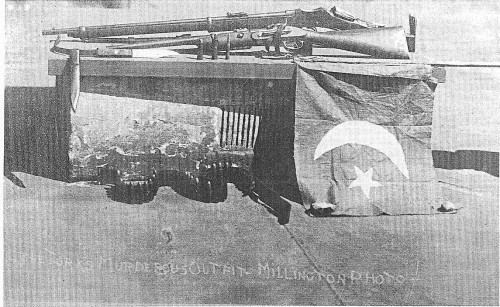 | ||
Total number of deaths 6 (including both perpetrators) Perpetrators Badsha Mahommed Gool, Mullah Abdullah | ||
The Battle of Broken Hill was a fatal incident which took place in Australia near Broken Hill, New South Wales, on 1 January 1915. Two men shot dead four people and wounded seven more, before being killed by police and military officers. Though politically and religiously motivated, the men were not members of any sanctioned armed force and the attacks were criminal. The two men were later identified as Muslim "Ghans" from the British colony of India, modern day Pakistan (some sources incorrectly identify them as Turkish).
Contents
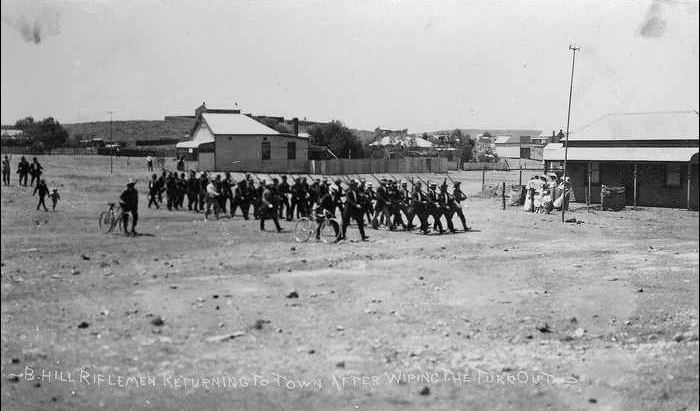
The assailants
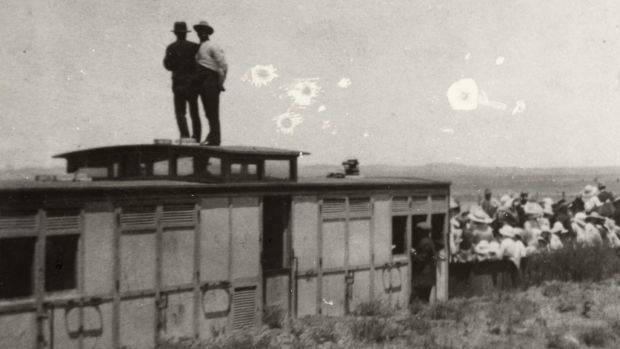
The attackers were both former camel-drivers working at Broken Hill. They were Badsha Mahommed Gool (born c. 1874), an ice-cream vendor, and Mullah Abdullah (born c. 1854), a local imam and halal butcher.
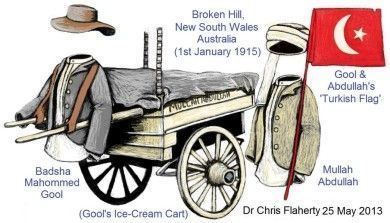
Gool's ice-cream cart was well known in town and was used to transport the men to the attack site. They also fashioned a home-made Ottoman flag which they flew. There appears to have been little effort made at hiding their identities.

Abdullah had arrived in Broken Hill around 1898 and worked as a camel driver. Several days before the killings Mullah Adbullah was convicted by Police Court for slaughtering sheep on premises not licensed for slaughter. It was not his first offence. Since the sanitary inspector, Mr. Brosnan, acting to enforce the municipal regulations, observed that the unauthorised slaughter was insanitary, he acted to enforce the law. In addition, Abdullah had ceased wearing his turban years before, "since the day some larrikin threw stones at me, and I did not like it".
Attack
Each New Year's Day the local lodge of the Manchester Unity Order of Oddfellows held a picnic at Silverton. The train from Broken Hill to Silverton was crowded with 1200 picnickers on 40 open ore trucks. Three kilometres out of town, Gool and Abdullah positioned themselves on an embankment located about 30 metres from the tracks. As the train passed they opened fire with two rifles, discharging 20 to 30 shots.
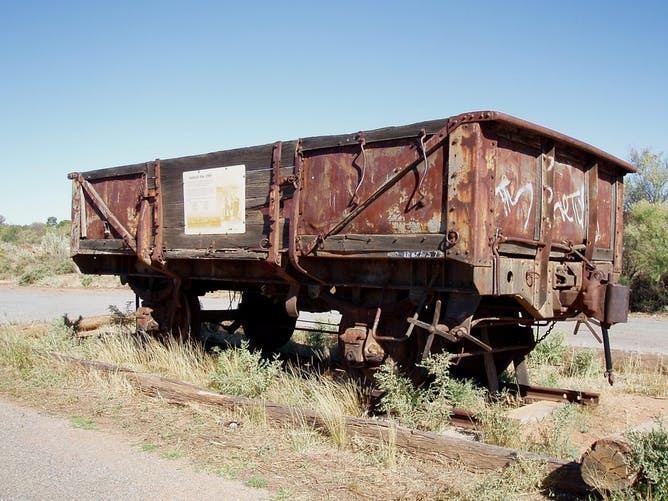
The picnickers initially thought that the shots were being discharged in honour of the train's passing, but once their companions started falling, the reality sank in.
Alma Cowie, aged 17 died instantly. William John Shaw, a foreman in the Sanitary Department, was killed on the train and his daughter Lucy Shaw was injured. Six other people on the train were injured: Mary Kavanagh, George Stokes, Thomas Campbell, Alma Crocker, Rose Crabb and Constable Robert Mills.
The railway guard on the train was "Tiger" Dick (Eric Edward) Nyholm, soon to be a father of six children, including the late Prof Sir Ronald Nyholm, also of Broken Hill. Nyholm was a renowned marksman and proved instrumental in protecting the train's passengers from further injury.
Police response
Gool and Mullah Abdullah made their way from the train towards the West Camel camp where they lived. On the way they killed Alfred E. Millard who had taken shelter in his hut. By this time the train had pulled over at a siding and the police were telephoned. The police contacted Lieutenant Resch at the local army base who despatched his men. When police encountered Gool and Abdullah near the Cable Hotel, the pair shot and wounded Constable Mills. Gool and Abdullah then took shelter within a white quartz outcrop, which provided good cover. A 90-minute gun battle followed, during which armed members of the public arrived to join the police and military. By the end of the battle very little shooting came from the pair and most of it was off target, leading Constable Ward to conclude that Mullah Abdullah was already dead and Gool was wounded.
James Craig, a 69-year-old occupant of a house behind the Cable Hotel, resisted his daughter's warning about chopping wood during a gun battle and was hit by a stray bullet and killed. He was the fourth to die.
At "one o'clock a rush took place to the Turks' stronghold". An eyewitness later stated that Gool had stood with a white rag tied to his rifle but was cut down by gunfire. He was found with 16 wounds. The mob would not allow Abdullah's body to be taken away in the ambulance. Later that day both bodies were disposed of in secret by the police.
Immediate events
The attackers left notes connecting their actions to the hostilities between the Ottoman and British Empires, which had been officially declared in October 1914. Believing he would be killed, Gool Mahomed left a letter in his waist-belt which stated that he was a subject of the Ottoman Sultan and that, "I must kill you and give my life for my faith, Allāhu Akbar."
Mullah Abdullah said in his last letter that he was dying for his faith and in obedience to the order of the Sultan, "but owing to my grudge against Chief Sanitary Inspector Brosnan it was my intention to kill him first."
Police were forced to stop a mob from marching on an Afghan camp the following night, after which there was no violence against the Afghan community. Instead, the actions were seen as representative of enemy aliens and the Germans in the area were the focus of violence. Believing the Germans had agitated the assailants to attack, the angry mob burnt the local German Club to the ground, cutting the hoses of the firemen who came to fight the flames.
The next day the mines of Broken Hill fired all employees deemed enemy aliens under the 1914 Commonwealth War Precautions Act. Six Austrians, four Germans and one Turk were ordered out of town by the public. Shortly afterwards, all enemy aliens in Australia were interned for the duration of the war.
Turkish sources claim that the letter from the Ottoman Sultan was a forgery, and that the Turkish flag found with the perpetrators was planted. It is claimed that the incident was attributed to Turks in order to rally the Australian public for the war.
The Silverton Tramway Company refunded in full the fares for the picnic train and the money was used to launch a public relief fund.
German Propaganda
The Sydney journal "The Bulletin" published a burlesque of the incident in the style of German propaganda, suggesting the Germans lauded the attack as a victorious military battle between Turkish forces and recruits on a troop train. supposedly the Turkish attackers killed 40 and wounded 70 (ten times the real figures) for the loss of only two dead. This parody wasfor some reason taken seriously by other newspapers, who published it almost verbatim a genuine example of German propaganda. The story was picked up by international papers in the US, UK and NZ, and when clippings from these foreign papers filtered back to Australia in the leters home of serving soldiers, it only reinforced the belief that the Bulletin's story was true. The 'fake news' was revived as an example of German mendacity by Australian papers during the Second World War and even as late as 1951 in Broken Hill's own "Barrier Daily Truth" paper.
Recently
In the late 1970s attempts were made to turn the story into a film The Battle of Broken Hill, to be directed by Donald Crombie, but this did not eventuate. However Robin Levinson made a film using the same title in 1981{url=http://www.battleofbrokenhill.com/}.
There have been several novels based around the battle. Turkish author Omer Ertur wrote A prelude to Gallipoli: the battle of Broken Hill 1915 (self-published, Oregon, 2005), reissuing it in a bilingual English/Turkish version as A day of terror in Australia: the conspiracy that brought Anzacs to Gallipoli (Donkiş ot Güncel Yayınlar, Istanbul, 2009) in which he asserts the 'battle' was a British plot to encourage patriotism and recruitment; in Australia Chris McCourt wrote The cleansing of Mahommed (Fourth Estate, Sydney, 2012), and Nicholas Shakespeare wrote Oddfellows (Vintage, Sydney, 2015), both focusing on racism and cross-cultural issues.
The Australian government refused requests to fund a commemoration of the event for its 100th anniversary. A ceremony marking the centenary of the massacre was held at Broken Hill railway station on 1 January 2015.
